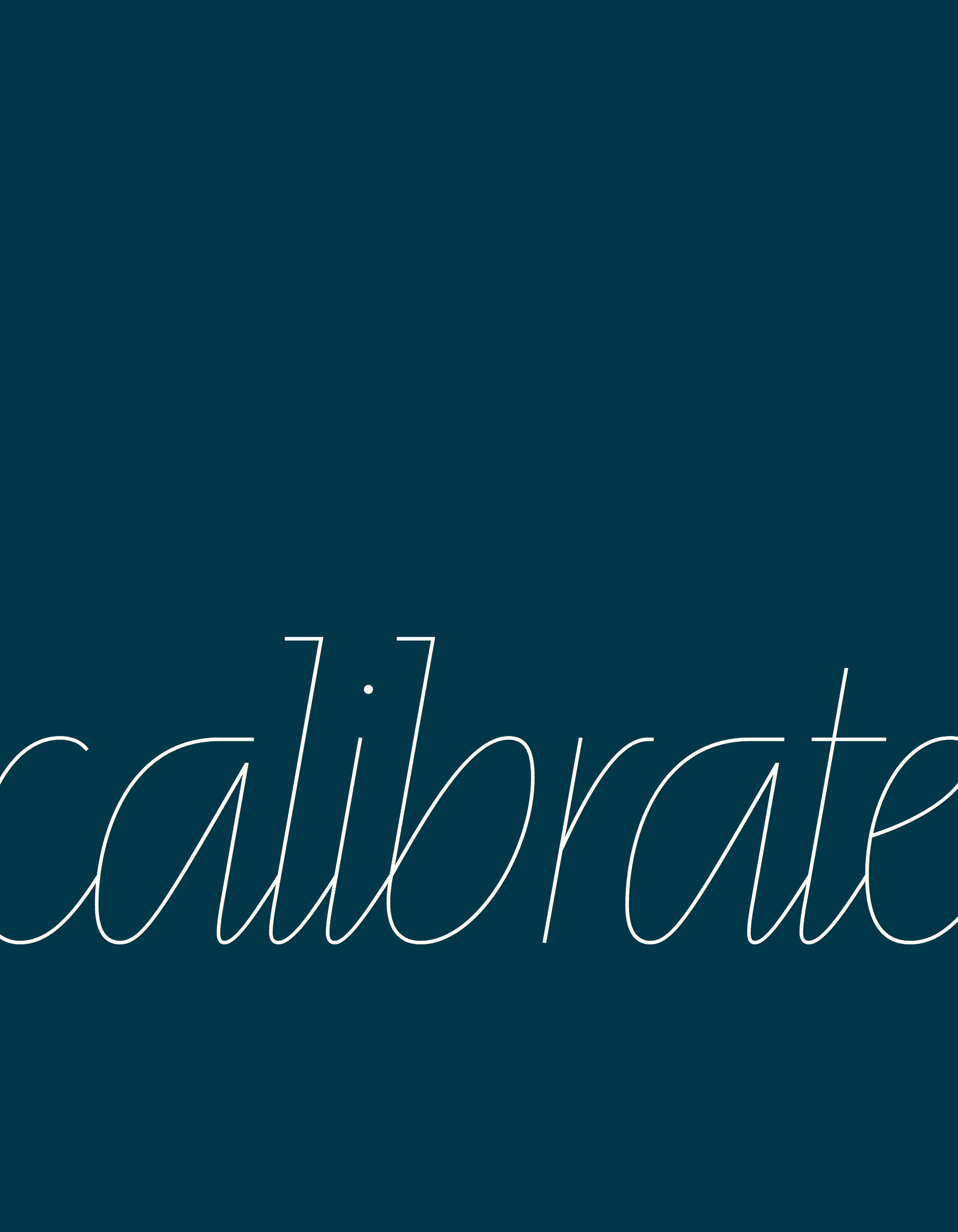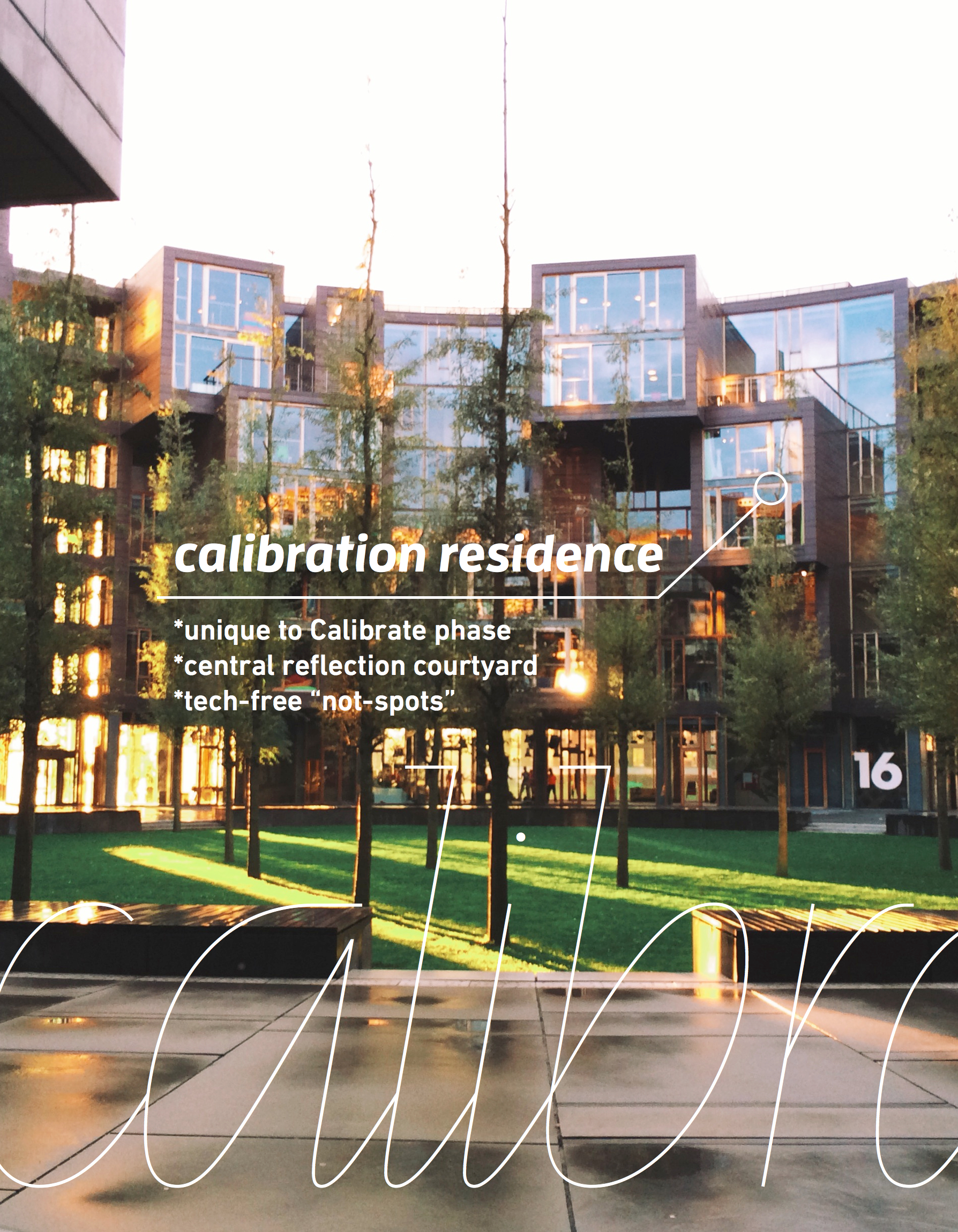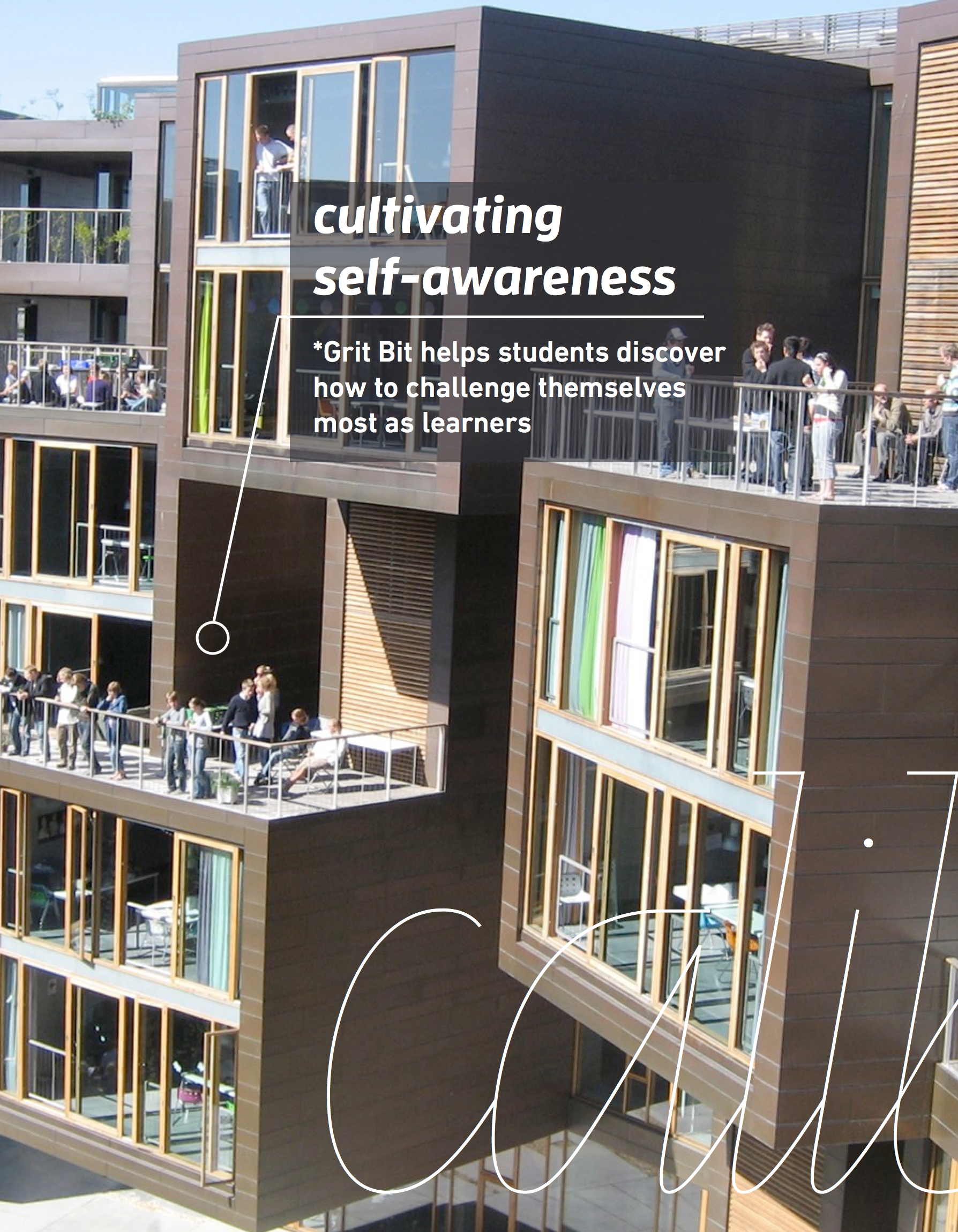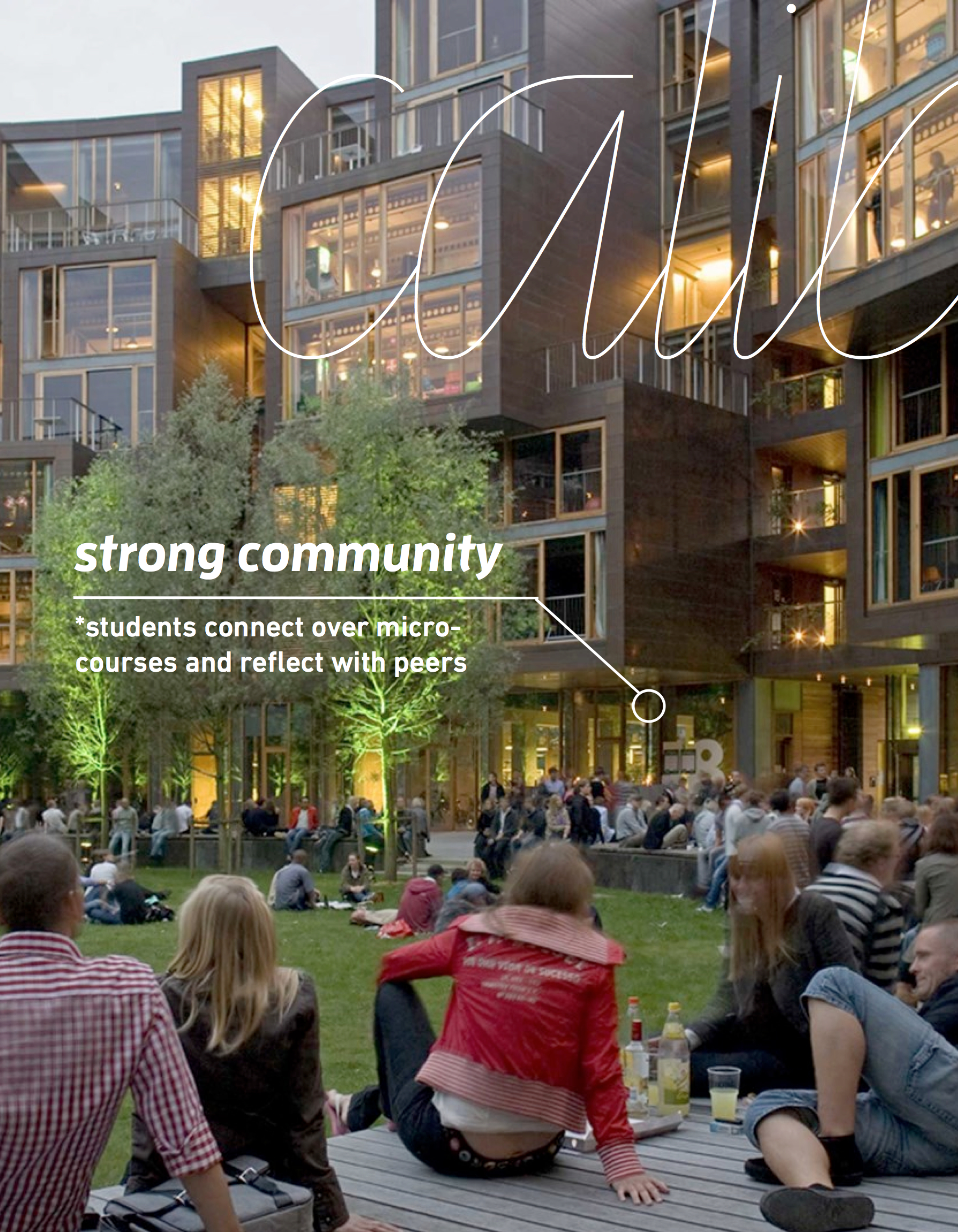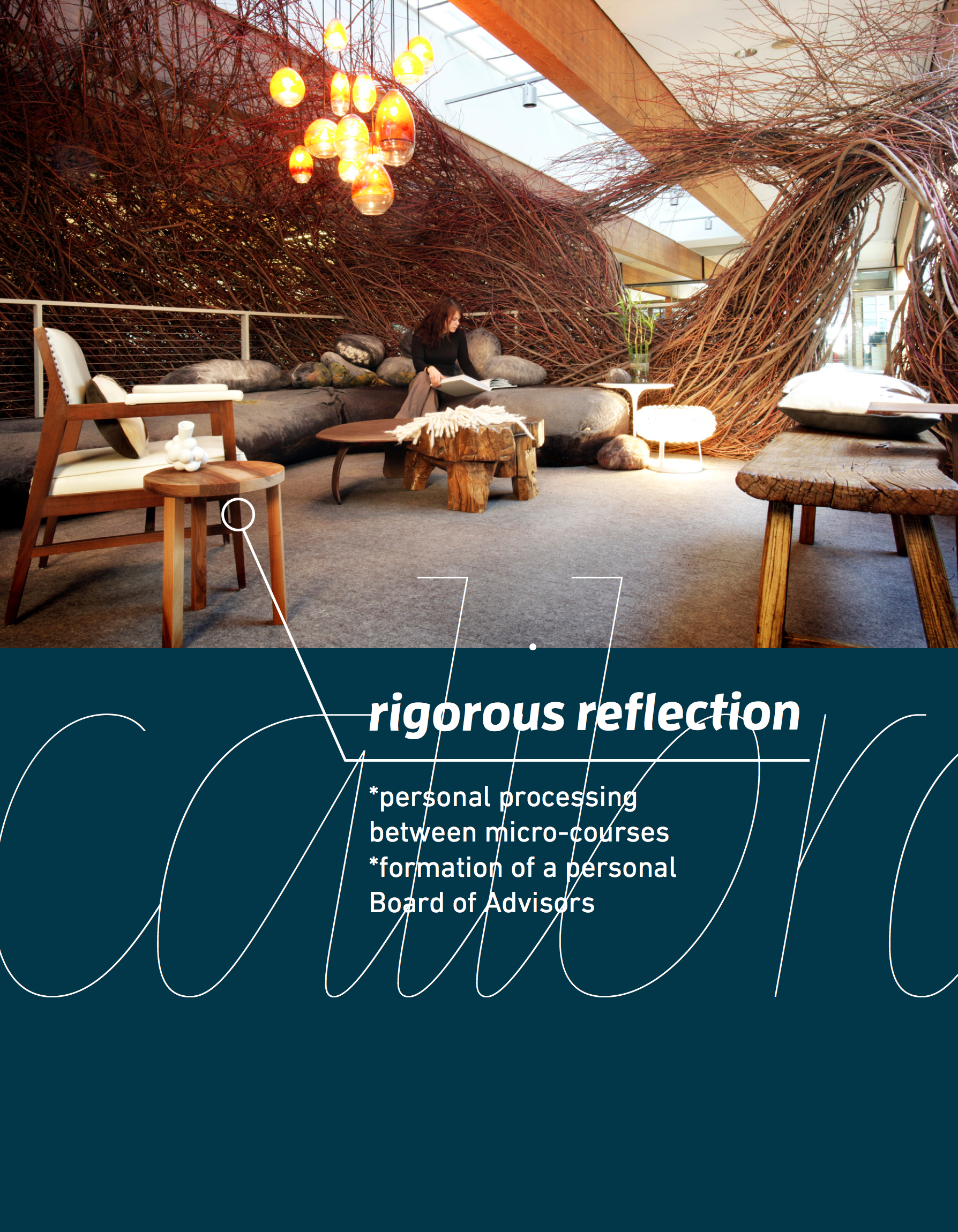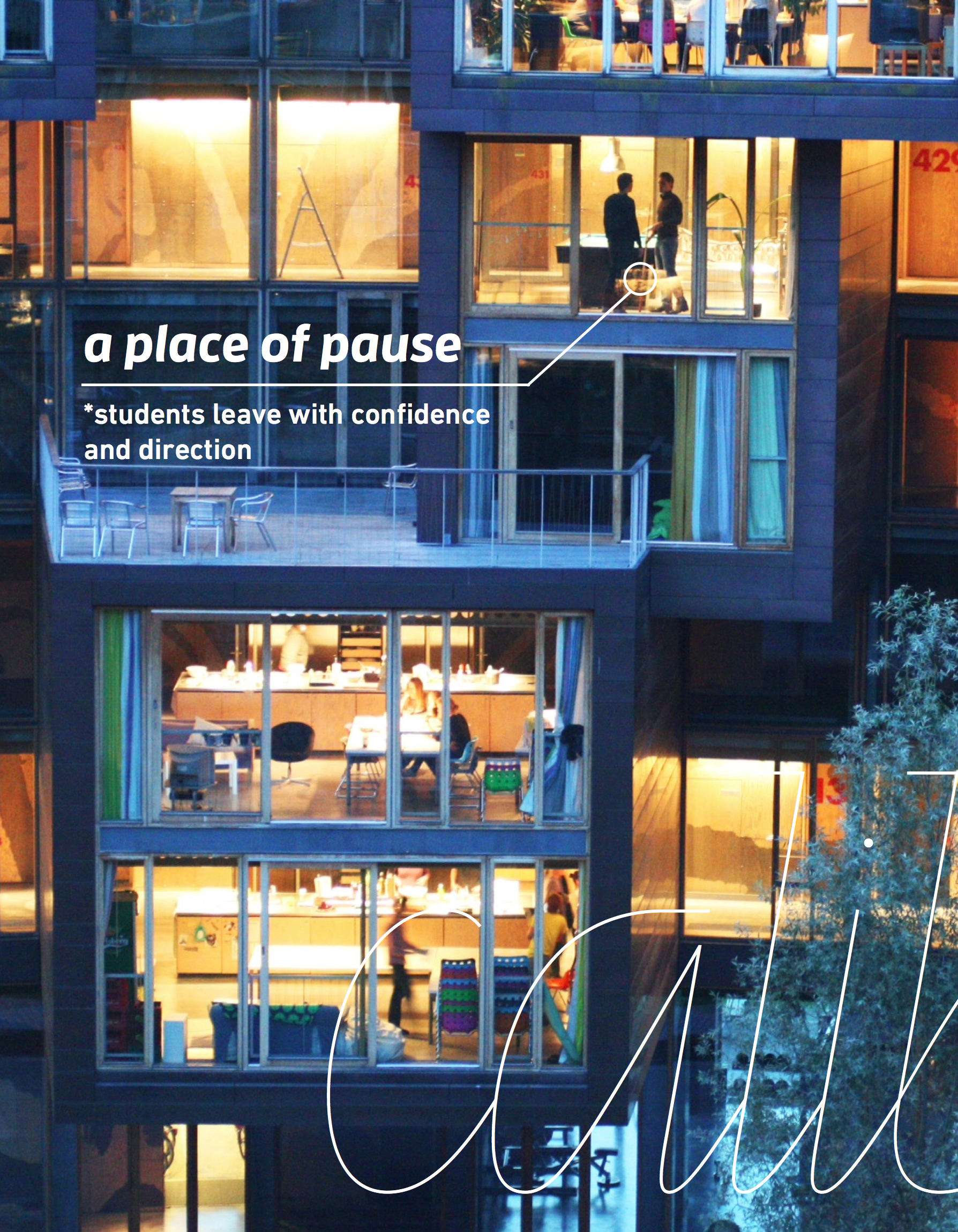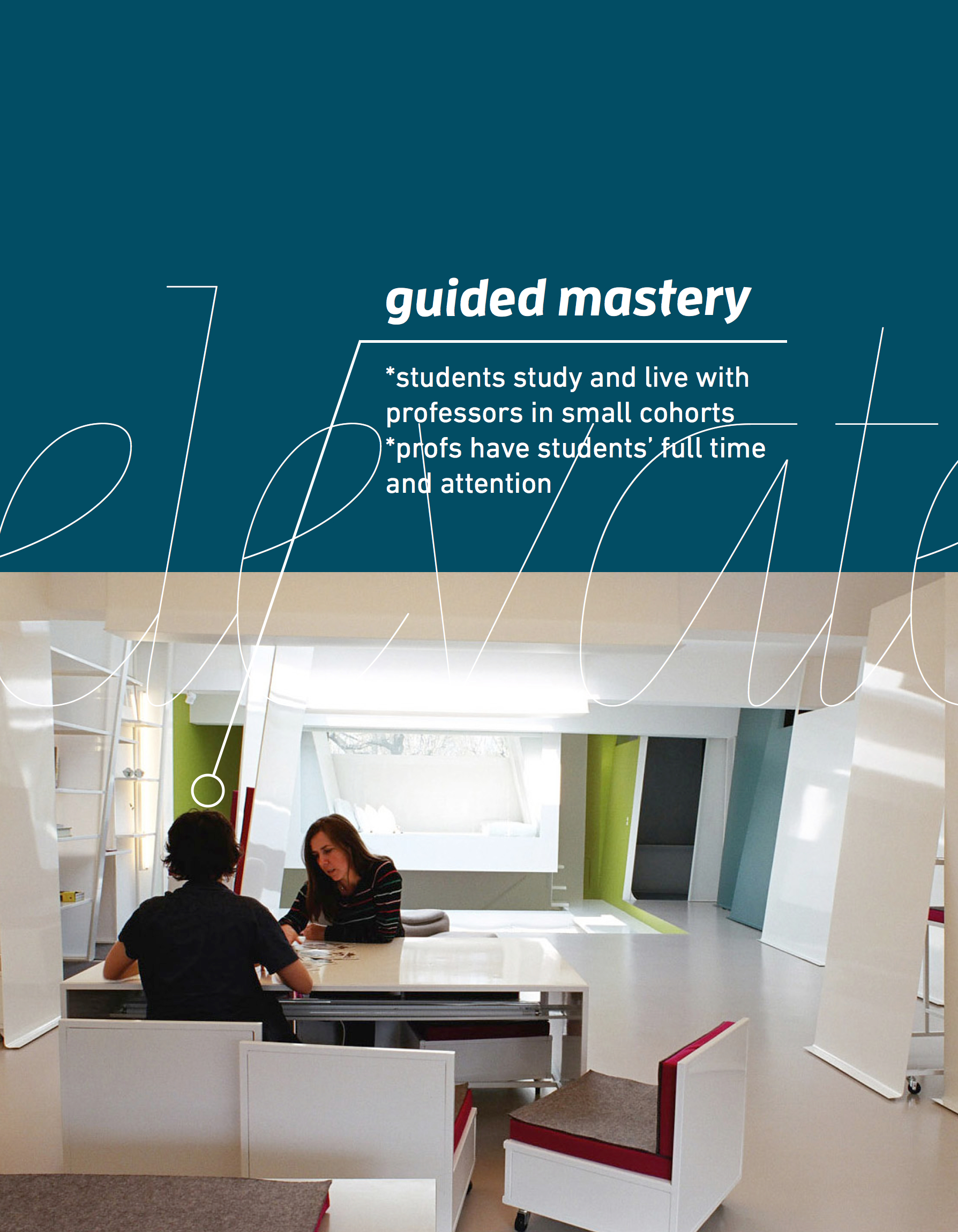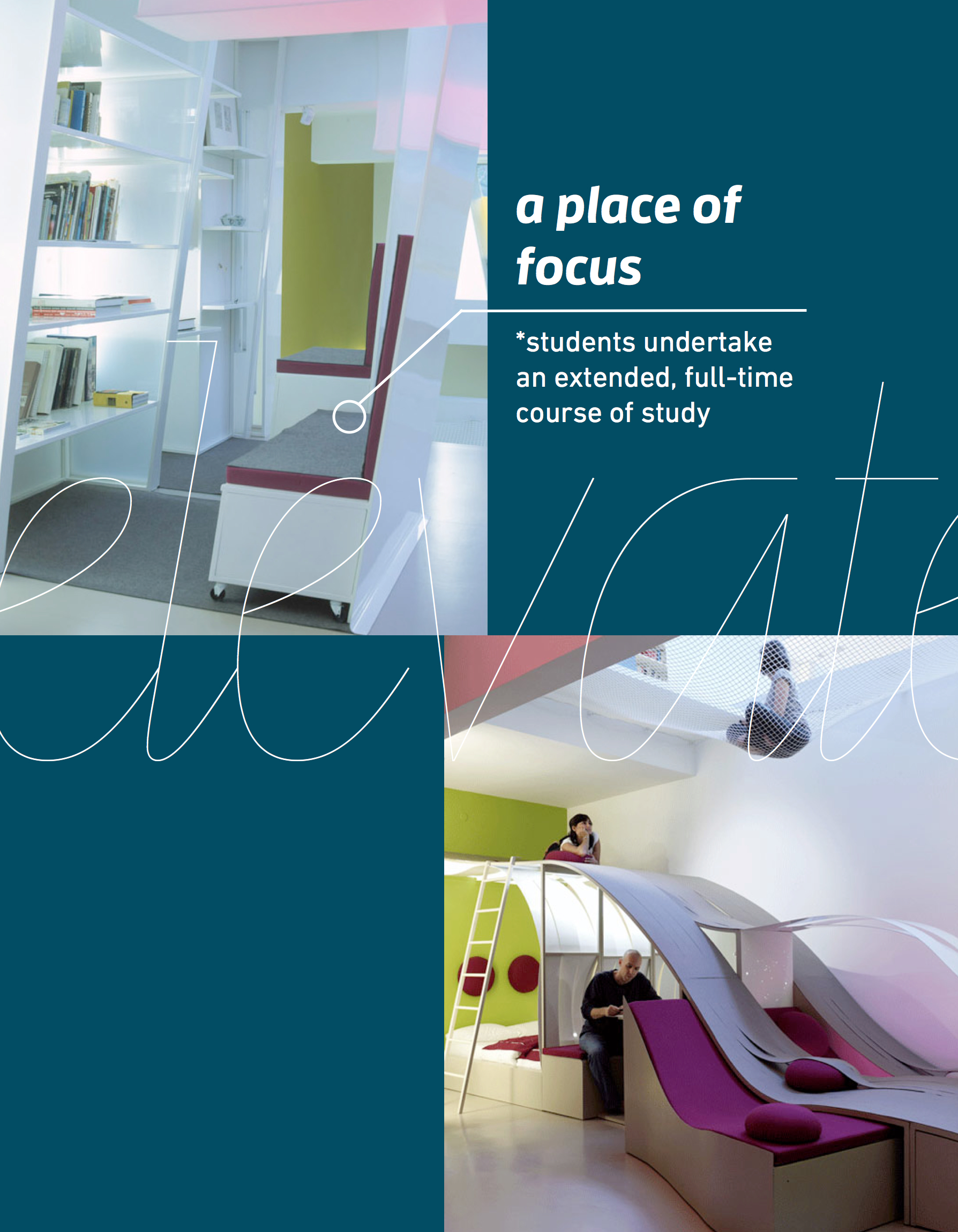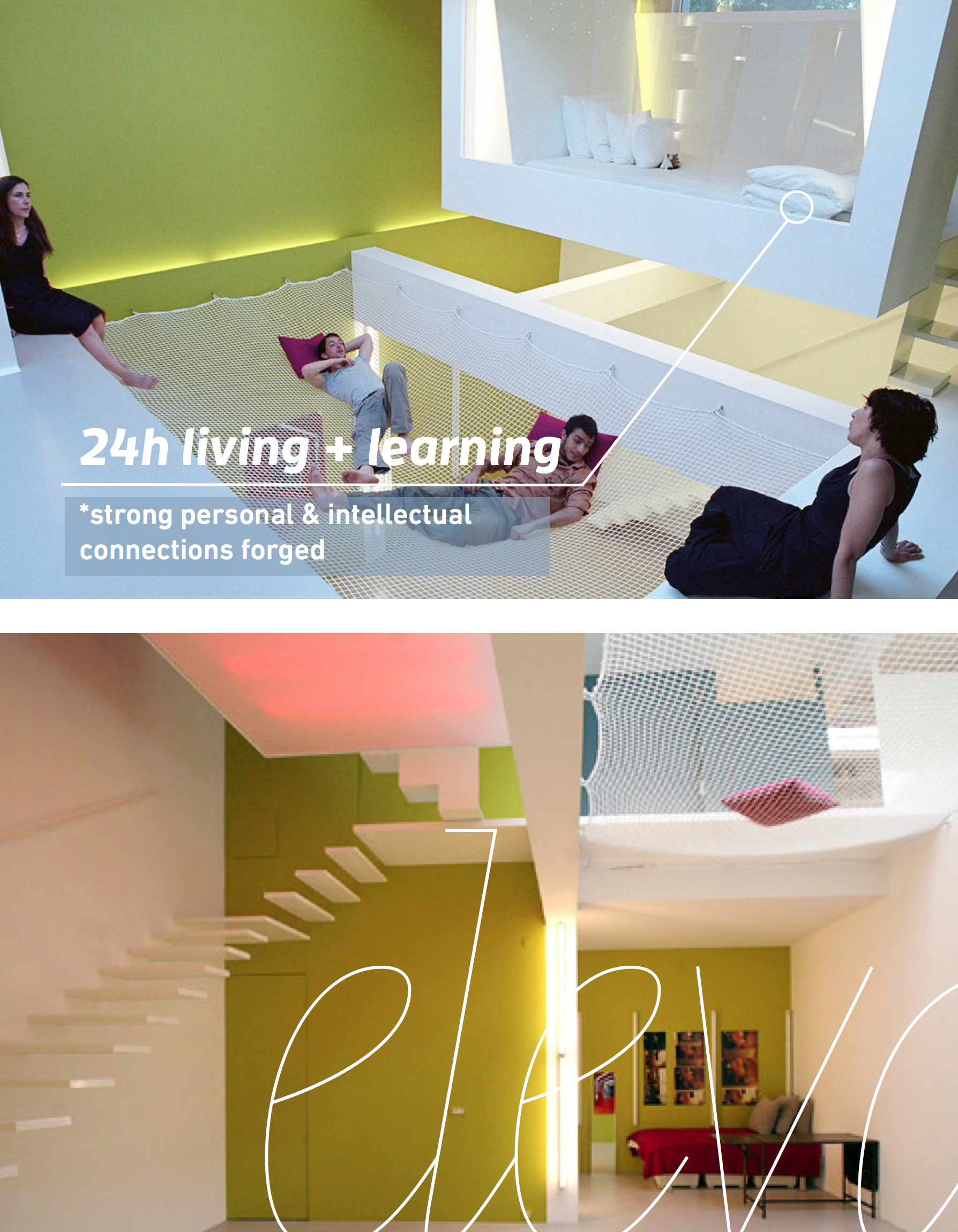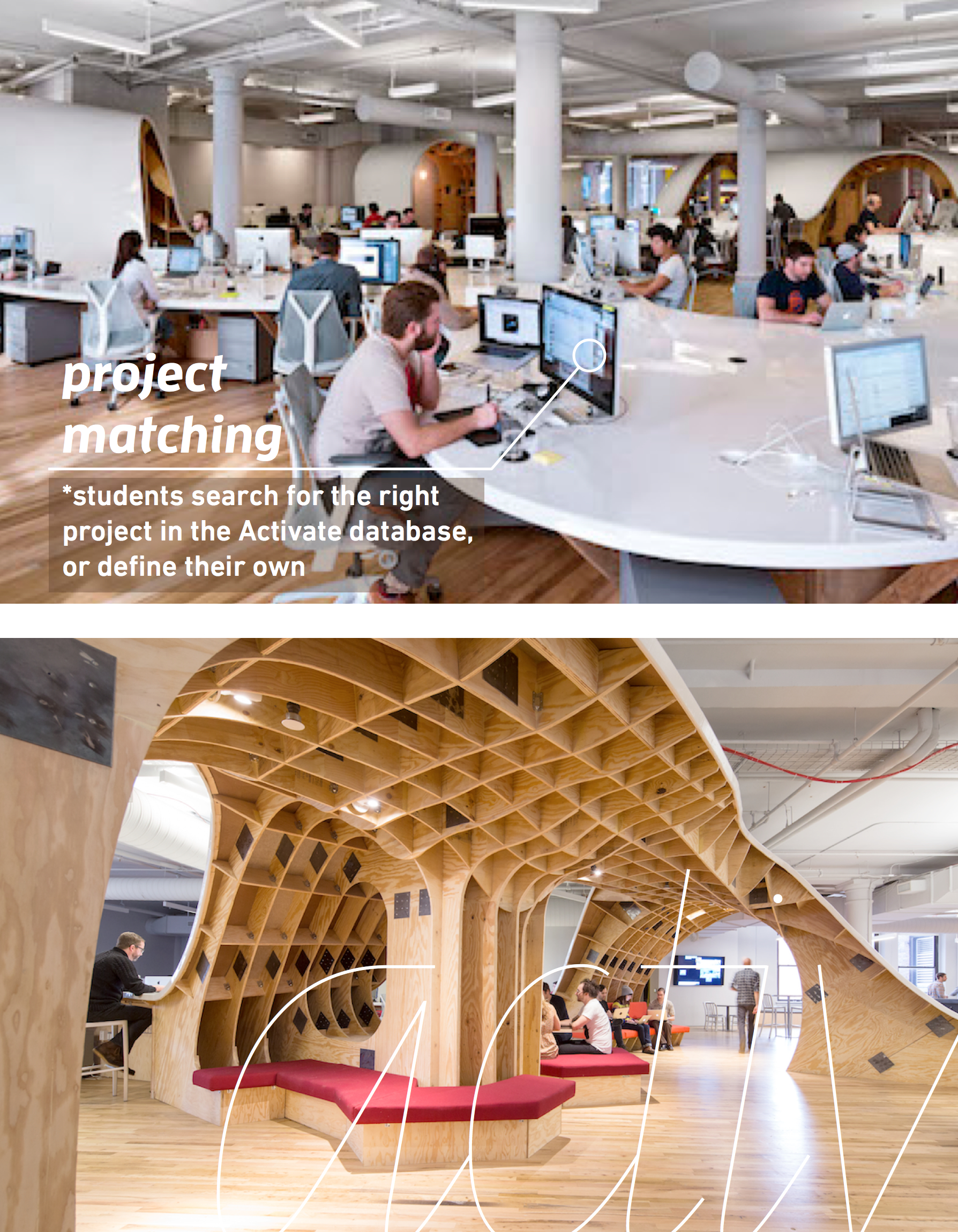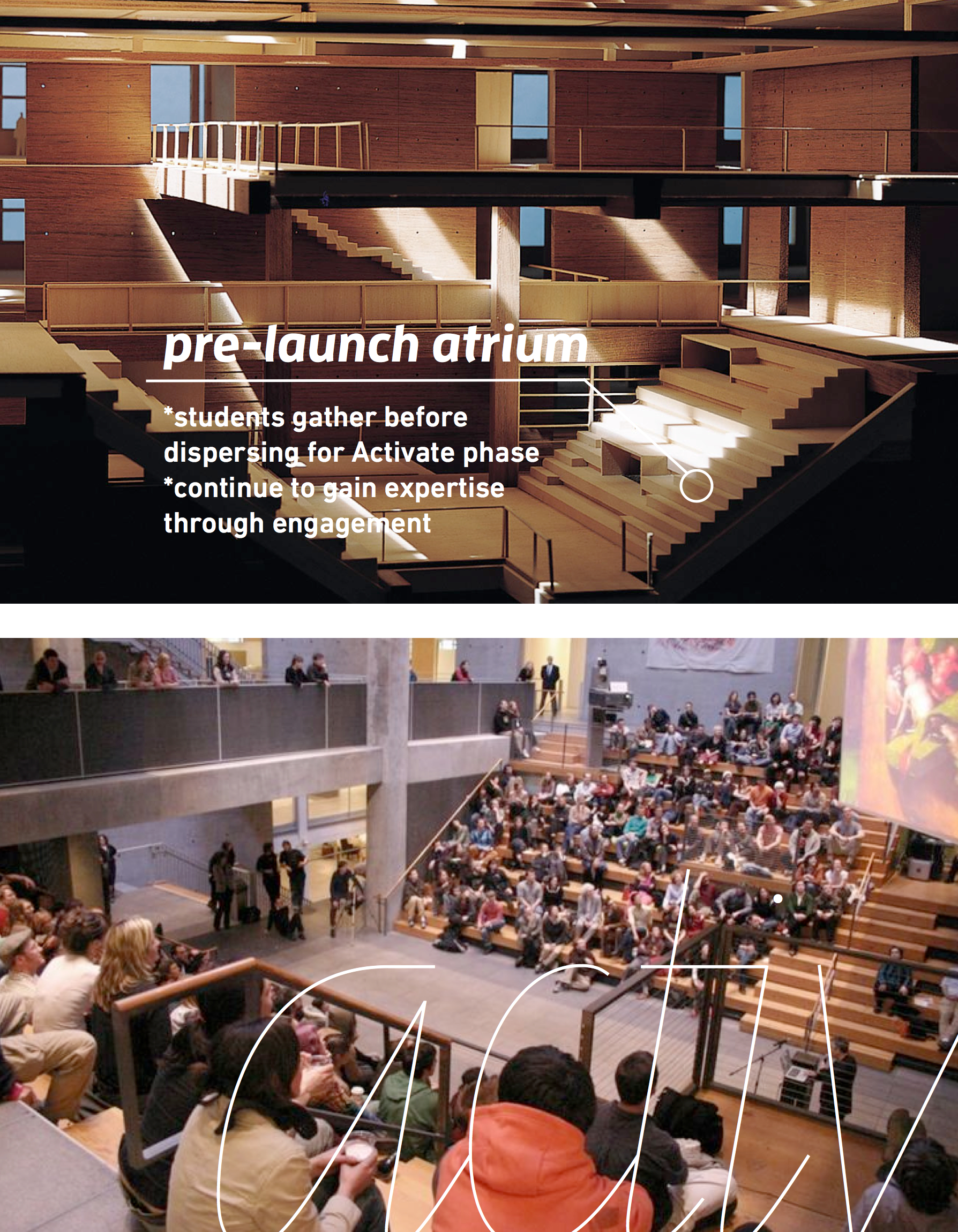The Summary
Take a peek into archival footage rescued from the future to discover how learning on campus was transformed by Paced Education.
Key Details
Historical Notes
The Setting
Prepare, apply, cram, conform, get through, graduate ... then search, flounder, flail: this was the archetypal experience of a university student at the turn of the 21st century.
Disruptive technologies were launching faster than humans could learn them, and the newly globalized economy meant an unprecedented level of interconnectedness. It was a polarized, class-divided, risk-averse, but thrill-seeking world.
Schools at that time—society’s core mechanism for strengthening people’s ability to adapt—were mired in conventional approaches and struggling
to change. The K-12 education system in the United States was still built upon a metronomic, industrial approach, while the working world was more chaotic and ambiguous than ever before.
The age of complexity had begun.
Higher education was an expensive staging ground between an overly supervised adolescence and a wildly complicated adulthood. College needed to regain its place as the experience that taught students how to be perpetual learners and to apply skills to the world outside its walls.
The Shift
From 1891-2019, students at Stanford were slotted into one of four groups based on age: Freshman, Sophomore, Junior, and Senior. They moved through this legacy organizational system year after year, but in 2019 the landscape changed.
The ducks before the ducks
Unlike today, Duck Syndrome used to be a pejorative term. Linguistic historians determined that, pre-2019, it was used to characterize the appearance of sun-soaked, laid-back ease while Stanford students were actually paddling furiously below the surface to keep up. This syndrome, with complete disregard for mental health, was not only accepted, but expected to affect all students.
In the early 2010s, multiple pilots were launched with the express intent of curbing Duck Syndrome and building students’ resilience. With increasing success from new programs on reflection, longevity, and personalized learning, Stanford leaders concluded that the arbitrary definition of progress based on the calendar year and students’ ages was driving the “get through” mentality, and simply outdated.
The University decided to part ways with the class-year system and adopt Paced education. Over time, Duck Syndrome became synonymous with personal growth and the ability to adapt to a variety of environments—to walk, run, swim or fly as needed.
In other words, the process of becoming.
From Frantic to Paced
Paced education was designed to promote academic exploration and then push rigor within disciplines. Students now moved through phases of learning based on their individual readiness, allowing them to transform at their own pace.
The three distinct phases were called: Calibration, Elevation, and Activation. While undergraduates, students cycled through these phases multiple times.
Advanced learning technologies gave students and faculty new types of bio-cognitive feedback to ground this process.
To balance these unparalleled technological resources, the University made an equal commitment to meditative modes like personal reflection through the now ubiquitous zones of digital silence, not-spots. Stanford humanists then helped pioneer the Slow Cognition movement.
Calibration (6-18 months)
We now know that students need to learn how they learn best. Calibration offered short (one day to one week), immersive, introductory experiences designed by faculty and practitioners, so students experienced a wide range of subject areas, learning models, and career trajectories.
Students remained in Calibration mode for varying lengths of time depending on personal readiness. Some stayed only six months, while others took nearly 18 months to sample interest areas, self-reflect (using both their GritBits and non-technological means), find learning gaps, and build the confidence to move forward with intention.
Faculty, initially wary of offering short courses, soon developed a taste for teaching bite-size introductions and experimental offerings. Not only intellectually invigorating, these courses also allowed professors to interact with a wider range of students. They were able to identify and nurture those who were best suited to their domains of expertise more easily.
Elevation (12-24 months)
Elevation took students deep into a content area with a singular focus. In this phase, intellectual rigor was paramount. Students entered the Elevation phase by coordinating with their self-selected personal Board of Advisors (BOA). Composed of academic and personal mentors, as well as more advanced students and trusted confidantes, the BOA had replaced all other forms of academic advising
by 2018.
Elevation held a special place in the hearts of both faculty and students. When Stanford gutted all of the lecture halls in the Main Quad area of campus in 2016, Elevation-specific living and learning quarters were created. In true Stanford tradition, these quickly became referred to as the “LivLerns.”
The new hybrid environments were lauded for their ability to foster meaningful relationships between professors and students. Those relationships contributed to the accelerated achievement, often equivalent to a pre-2015 PhD, that students reached in just 18-24 months.
Activation (12-18 months)
After learning how to acquire deep expertise in Elevation, students translated their knowledge to several real-world applications throughout the Activation phase. This allowed them to exercise and iterate upon their academic knowledge in the context of internships, service projects, high-caliber research, and entrepreneurship.
Activation was a time to apply skills and knowledge in a range of different modes. Students cherished the opportunity to try on career vectors while still within the context and explorational
safety of the university.
The Achievement
In Paced Education:
- Stanford moved from the four-year system to three phases that were individually paced: Calibration, Elevation, and Activation.
- Students made better choices about what to study deeply, and graduated with mastery not just of what they learned, but also how they learned.
- Faculty developed new Calibration micro-courses, allowing them to experiment with new offerings and better identify potential students for their Elevation phase.
- New spaces were created for reflection, as well as rigorous professor-student learning.
- Duck Syndrome became synonymous with bravery, resilience, and self-reflection.
- Taste, try, reflect, achieve, fail, reflect, pursue, succeed, apply, apply, apply... then again: this was the experience of a Stanford student in the era of Paced education.
Exhibit Article Archive
Browse below to search through video archives of the exhibits displayed on May 1st, 2100.
ARTICLE 67
Grit Bit & Growth Grid
Organic Semiconductors, & Molecular electronics, Acetate Applicator
Applied as a temporary tattoo, even these early 1st generation Grit Bits were able to provide context around learning goals, helping students become self-aware, adaptable learners.
The original Grit Bit tracked stress & mood, physical & social activity, and location. Detailed data were available only to the individual student, while a small amount of anonymous aggregate data were available to the university on an opt-in basis.
Student Growth Grids (displayed here on Apple iPads—early "tablet" computers) were used to set learning goals, place them in context, and set activity reminders; allowing students to reflect on the conditions contributing to their learning progress and to experiment with new ways to learn and live.
Grit Bits available for Time Travelers to take home
Future Docent explains Grit Bit to Time Traveler
ARTICLE 64
CALIBRATION DASHBOARD
Digital interface snapshot showing learning goals and micro-courses
During the Calibration phase, every student had a personalized dashboard to set, track, and reflect upon their learning goals. Because the goal of Calibration was for each student to learn how they learn best, students were tasked with setting learning goals every week. These goals included mastery of specific skills, practice with different styles of learning, attempts at new solo and collaborative behaviors, as well as experience in occupational situations.
Shown here is a snapshot of one student’s Calibration dashboard from the week of May 1, 2025. Note she’s attempted each learning goal to some degree. Following the dashboard is the series of micro-courses she enrolled in to further attempt her learning goals. Each micro-course mapped to a specific goal.
Watch Video Kelly Schmutte explain Micro Courses
WATCH CALIBRATION DASHBOARD DEMO
ARTICLE 12
Cognitive Biofeedback Mirror
Human presence sensor, chemical barrier, digital readout
As students began to feel the benefits of Calibration via hyper-adaptive and responsive monitoring devices like the Grit Bit and Calibration Dashboard, numerous startups sprang up in the nascent domain. The Cognitive Biofeedback Mirror, often nicknamed the “Hormone Mirror,” was the flagship product of one such company led by early 21st century student Jesse Day.
The hormone mirror was an early attempt at modern bio-mnemonic calibration. After selecting their academic courses and extra-curricular engagements, students would periodically check in with the hormone mirror to determine if any changes needed to be made to optimize mental, emotional, and physical well being.
The hormone mirror was first implemented at Stanford in 2020, after it was found that the cortisol (stress hormone) level was so high in the undergraduate population that it was inhibiting the function not only of serotonin (happiness hormone) but also of dopamine (reward hormone), which is a key indicator of learning.
Watch Video of Jess Munro use a Cognitive Biofeedback Mirror
ARTICLE 17
Selecting A Personal Board of Advisors
Recovered time capsule photograph
The transition moment between one’s Calibration and Elevation phase was characterized by a famed experience, fondly referred to as “The Meeting,” with one’s Personal Board of Advisors. It was the collective decision of the group whether the student had self-calibrated and was prepared to move into a phase of deep focus in Elevation.
This photograph was recovered from the time capsule of the first group to pilot the Personal Board of Advisors. A new concept at the time, this group of mentors, coaches and confidantes was designed to provoke, challenge and celebrate the student in his or her learning journey.
Watch Video of Tania Anaissie explain Personal Board of Advisors
VIEW ACTUAL PBA SELECTION FORM
ARTICLE 59
New Spaces for Living and Learning
Digital diorama of phase-specific living and learning quarters
When Stanford transitioned to Paced Education and formatted its educational experience into 3 distinct phases of Calibration, Elevation, and Activation, it also rebuilt and repurposed the space on campus.
The images here depict spaces that were tailored to the distinct needs of students and faculty in each phase. Stanford became known for pioneering elegant and innovative new architectural designs that were mode-specific.
Watch Video of Kelly Schmutte explain Calibration Spaces
VIEW LIVE/LEARN CONCEPT ART
